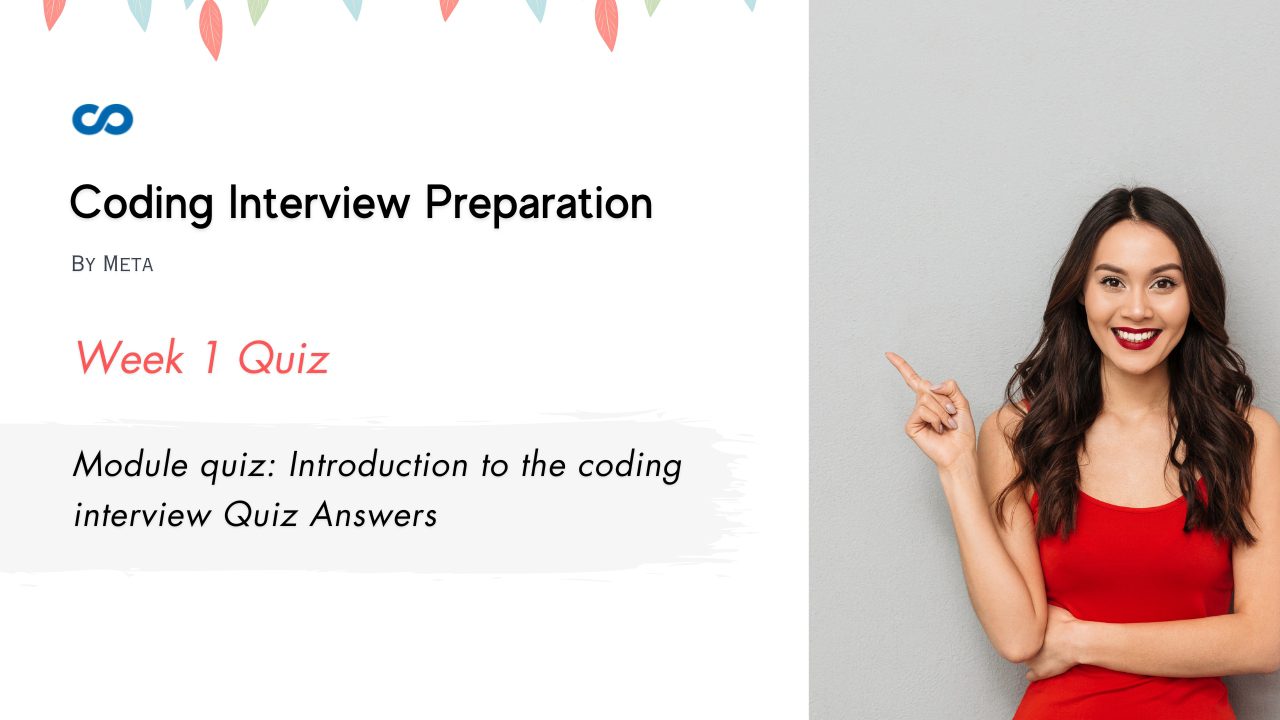Module quiz: Introduction to the coding interview Quiz Answers
In this article i am gone to share Coursera Course: Coding Interview Preparation by Meta Week 1 | Module quiz: Introduction to the coding interview Quiz Answers with you..
Also visit: Coding Interview Preparation Final graded assessment Quiz Answers
Module quiz: Introduction to the coding interview Quiz Answers
Question 1)
What should be done when presented with a technical problem where the solution is not immediately obvious?
- Move the conversation along and try not to draw attention.
- Ask the interviewer how they would solve the problem.
- Ask questions.
Question 2)
During a technical interview, is it better to rely on the work of others, or code everything yourself?
- Use code written by others.
- Write as much code as you can to show off your skills.
- Use the data structures, but don’t use any other external implementation.
Question 3)
Given an array that represents sock colors: Sock_colors = [3,3,2,1,1,3,5,1,4,2], how many pairs of the same color socks exist?
2- 3
- 4
Question 4)
It is best to remain silent when writing code during a technical interview.
- True
- False
Question 5)
Should I ask questions in an interview?
- Yes, but only when the conversation looks like it is going to help the interviewer along.
- Yes. Asking questions can run down the interview clock and so avoid awkward questions.
- Yes. Ask questions for clarity or during an appropriate time.
Question 6)
What is the STAR method?
- A coding practice with 4 key components.
- A stellar answer to a good question.
- A structured approach to answering questions.
Question 7)
What is meant by transfer rate in relation to a CPU?
- The rate at which memory is transferred into cache.
- The rate at which instructions are processed.
- The rate at which a processor can convert input from a terminal.
Question 8)
When engaged with a coding interview what sorts of tests should you aim to include?
- Unit tests
- Functional tests
- Integration tests
Question 9)
Which memory location is closest to the CPU?
- Secondary memory
- Main memory
- Cache
Question 10)
When designing a solution it is best to:
- Planning an outline, engaging the main obstacles, looking at the potential solutions and constantly reviewing.
- Doing a quick sketch then implementing everything on the page.
- Tackle every problem as it arises.

